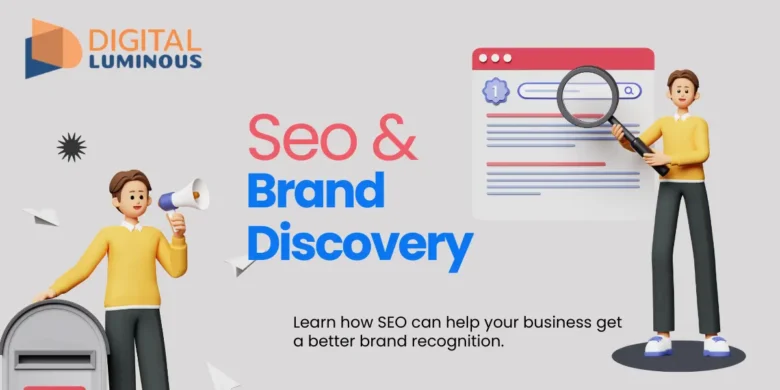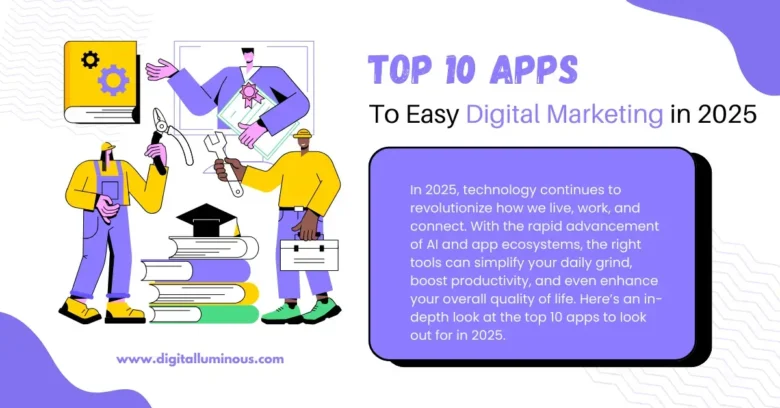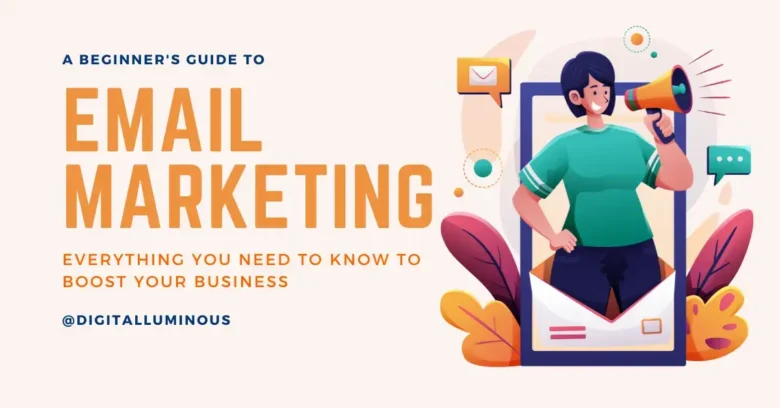
In today’s digital age, paid advertising has become an essential component of any successful marketing strategy.
With the ability to reach a targeted audience and drive measurable results, paid advertising offers businesses an effective way to increase brand visibility, generate leads, and boost sales.
If you’re new to the world of paid advertising, fear not! This beginner’s guide will walk you through everything you need to know to get started and achieve success in your paid advertising campaigns.
Understanding the Basics of Paid Advertising (PPC)
Paid advertising, also known as pay-per-click (PPC) advertising, involves paying for ad space on various online platforms, such as search engines, social media networks, and websites.
Unlike organic traffic, which is earned through unpaid efforts like SEO, paid advertising allows businesses to bid on keywords and target specific demographics to ensure their ads are seen by the right audience at the right time.
Example: Let’s say you own a local bakery in New York City and want to promote your new line of cupcakes. By running a paid advertising campaign on platforms like Google Ads or Facebook Ads, you can target users in the New York City area who are searching for terms like “cupcake delivery NYC” or have shown an interest in baking-related content.
The Power of Paid Marketing
Paid advertising offers a range of advantages for businesses, regardless of their size.
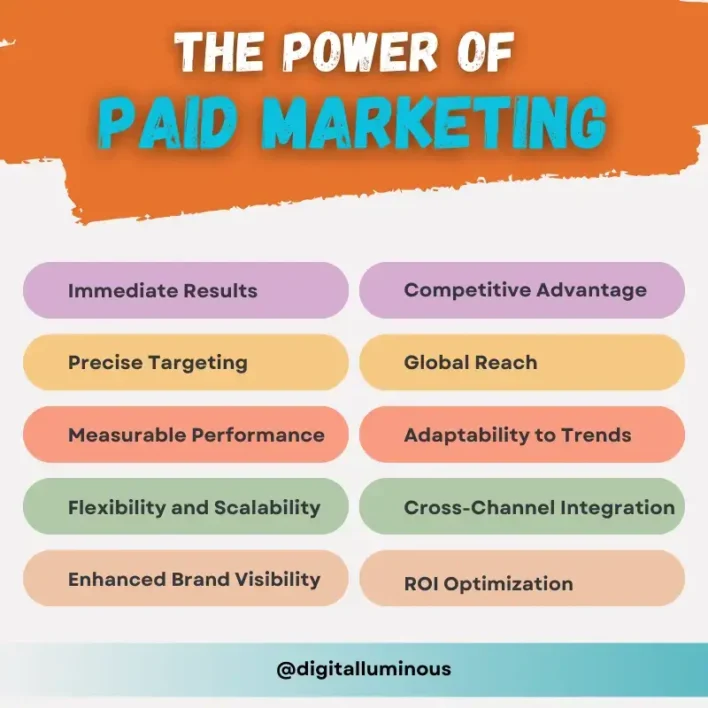
- Immediate Results: Unlike organic marketing efforts that require time to gain momentum, paid ads provide instant visibility.
Your brand can quickly reach potential customers as soon as your campaigns go live.
- Precise Targeting: Paid advertising platforms offer advanced targeting options, allowing you to tailor your ads to specific demographics, interests, and online behaviors.
This precision ensures that your message resonates with the right audience, increasing the likelihood of engagement and conversions.
- Measurable Performance: Paid advertising provides comprehensive analytics, enabling you to monitor your campaign’s performance in real-time.
You can track metrics such as ad views, clicks, and conversions, gaining valuable insights into the effectiveness of your campaigns. This data-driven approach allows you to make informed decisions and optimize your strategies for better results.
- Flexibility and Scalability: Paid advertising offers flexibility in budget allocation and audience targeting. You can adjust your spending and audience parameters as needed, allowing for seamless scalability as your business grows.
Whether you’re starting small or expanding your reach, paid advertising accommodates your evolving needs and objectives.
- Enhanced Brand Visibility: Paid advertising increases your brand’s visibility across various online channels, ensuring that your business stands out in a crowded digital landscape.
With strategic targeting and compelling ad creatives, you can capture the attention of potential customers and strengthen brand awareness.
- Competitive Advantage: Paid advertising allows you to outperform competitors by strategically positioning your brand in front of relevant audiences.
By leveraging data-driven insights and optimization techniques, you can stay ahead of the competition and capture market share within your industry.
- Global Reach: Paid advertising offers the opportunity to reach a global audience, allowing you to expand your business beyond geographical limitations.
Whether you’re targeting local customers or tapping into international markets, paid ads provide the flexibility to tailor your campaigns according to diverse audience preferences and behaviors.
- Adaptability to Trends: Paid advertising platforms continually evolve to accommodate emerging trends and consumer preferences.
By staying updated on industry developments and leveraging innovative ad formats, you can adapt your campaigns to align with current trends and capitalize on new opportunities for engagement and conversion.
- Cross-Channel Integration: Paid advertising seamlessly integrates with other marketing channels, such as social media, email marketing, and content marketing.
By incorporating paid ads into your omnichannel strategy, you can create cohesive brand experiences and maximize the impact of your marketing efforts across multiple touchpoints.
- ROI Optimization: Paid advertising enables you to optimize return on investment (ROI) by refining your targeting, messaging, and conversion strategies.
Through continuous testing and iteration, you can identify high-performing elements of your campaigns and allocate resources more effectively to achieve maximum ROI.
Example: Sarah's Sweets," a bakery in San Francisco, uses PPC ads to get more customers online. When she starts ads on Google, more people visit her website and ask about her treats. By picking who sees her ads and checking how well they work, Sarah makes sure she gets the most out of her ads. As her bakery gets busier, Sarah makes her ads bigger to reach even more people. Thanks to smart ads, "Sarah's Sweets" becomes the go-to spot for tasty treats in San Francisco.
Choosing the Right Paid Advertising Channels
With numerous paid advertising channels available, it’s essential to choose the ones that align with your business goals and target audience. Some popular paid advertising channels include.
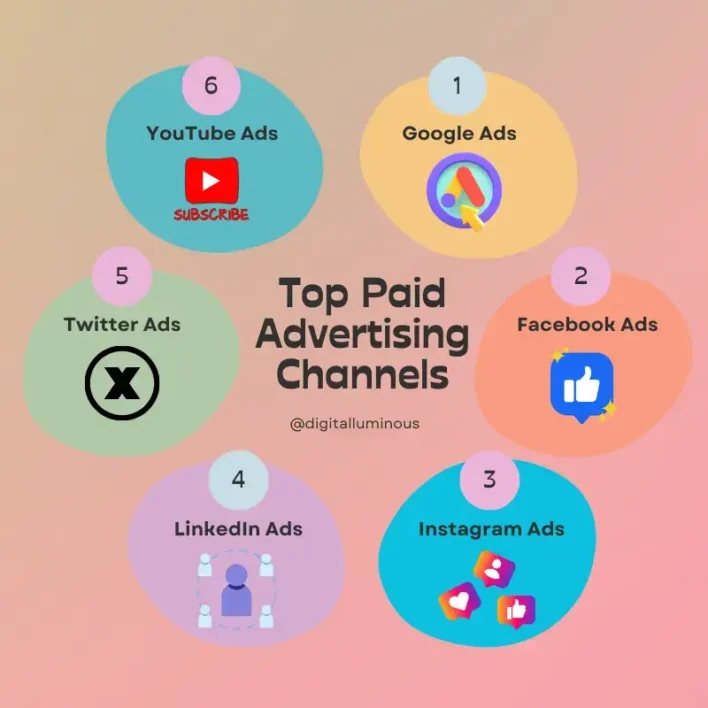
- Google Ads: Ideal for reaching users actively searching for products or services related to your business.
- Facebook Ads: Great for targeting specific demographics, interests, and behaviors.
- Instagram Ads: Perfect for businesses with visually appealing products or services.
- LinkedIn Ads: Ideal for B2B companies looking to target professionals and decision-makers.
- Twitter Ads: A great platform to reach a highly engaged audience in the USA interested in real-time updates and discussions, particularly relevant for certain industries.
- YouTube Ads: Video is a powerful advertising medium, and YouTube Ads can be a great way to reach viewers in the USA across a wide range of demographics and interests.
Example: Suppose you run a small boutique clothing store in Los Angeles. To promote your latest collection, you might choose to run Facebook and Instagram ads targeting fashion enthusiasts in the Los Angeles area, while also running Google Ads targeting users searching for terms like “trendy clothing stores in LA.
Setting Up Your First Paid Advertising Campaign
Setting up your first paid advertising campaign can seem daunting, but with the right approach, it’s relatively straightforward. Here’s a step-by-step guide to help you get started:
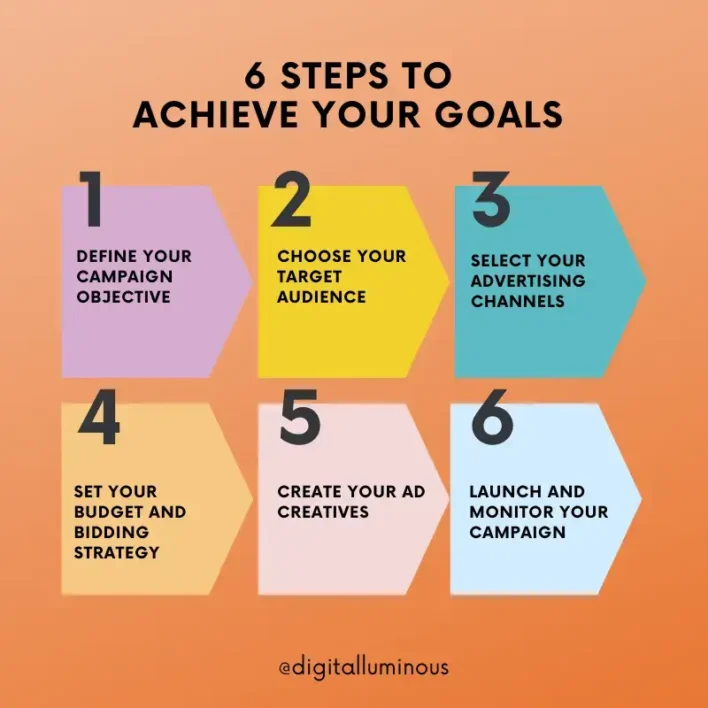
- Define Your Campaign Objective: Before you start your paid advertising campaign, it’s crucial to clearly define your goals. Ask yourself what you want to achieve with your campaign.
Are you looking to drive more traffic to your website, generate leads for your business, or increase sales of a specific product or service? Defining your objectives will guide all aspects of your campaign, from targeting to ad creatives.
- Choose Your Target Audience: Identifying your target audience is essential for reaching the right people with your ads. Consider factors such as demographics (age, gender, income), interests (hobbies, preferences), and location (geographic area).
By understanding who your ideal customers are, you can tailor your ads to resonate with their needs and preferences, increasing the likelihood of engagement and conversion.
- Select Your Advertising Channels: There are various paid advertising platforms available, each with its own strengths and target audience. Research and evaluate which platforms align best with your campaign goals and target audience.
Popular options include Google Ads for search and display advertising, Facebook Ads for social media advertising, and LinkedIn Ads for B2B targeting. Choosing the right channels ensures that your ads are seen by the most relevant audience.
- Set Your Budget and Bidding Strategy: Determine how much you’re willing to invest in your paid advertising campaign and allocate your budget accordingly. Consider factors such as your overall marketing budget, campaign objectives, and expected return on investment (ROI).
Additionally, choose a bidding strategy that aligns with your goals, whether it’s maximizing clicks, impressions, or conversions. Adjust your bidding strategy based on performance metrics to optimize your campaign’s effectiveness.
- Create Your Ad Creatives: Develop compelling ad creatives that capture your audience’s attention and compel them to take action. This includes crafting engaging headlines, persuasive ad copy, and visually appealing images or videos.
Focus on highlighting the unique value proposition of your products or services and addressing the pain points of your target audience. A/B test different ad creatives to identify which ones resonate best with your audience.
- Launch and Monitor Your Campaign: Once your campaign is live, closely monitor its performance to ensure it’s delivering the desired results.Track key metrics such as click-through rate, conversion rate, and return on ad spend (ROAS).
Use analytics tools provided by the advertising platforms to gain insights into your campaign’s effectiveness and make data-driven decisions. Continuously optimize your campaign by adjusting targeting, bidding, and ad creatives based on performance data to maximize ROI.
Example: Let’s say you own a landscaping business in Chicago and want to attract new clients for your lawn care services. You decide to run a Google Ads campaign targeting users in the Chicago area searching for terms like “lawn maintenance services near me.” You set a daily budget of $50 and choose a bidding strategy that maximizes clicks within your budget. You create compelling ad copy highlighting your services and special offers, along with eye-catching visuals showcasing your work. After launching your campaign, you monitor its performance daily, making adjustments to keywords, ad copy, and bidding strategy to improve click-through rates and conversions.
Conclusion
In Conclusion, paid advertising can be a powerful tool for growing your business and reaching your target audience effectively.
By understanding the basics of paid advertising, choosing the right advertising channels, setting up your campaigns strategically, and analyzing performance metrics, you can create successful paid advertising campaigns that drive results and help you achieve your business objectives.
Remember to continuously monitor and optimize your campaigns based on performance data to ensure ongoing success in your paid advertising efforts.
With the right approach and mindset, paid advertising can take your business to new heights in today’s digital landscape.
FAQs
What is paid advertising, and how does it work?
Paid advertising, also known as Pay Per Click (PPC), involves placing ads on various online platforms and paying a fee each time a user clicks on the ad. It allows businesses to reach a targeted audience and promote their products or services.
Why should I consider using paid advertising for my business?
Paid advertising offers several benefits, including increased visibility, precise targeting, measurable results, and scalability. It allows you to reach potential customers effectively and drive desired actions, such as website visits or conversions.
What are the different types of paid advertising platforms available?
Some popular paid advertising platforms include Google Ads, Facebook Ads, Instagram Ads, LinkedIn Ads, Twitter Ads, and YouTube Ads. Each platform offers unique features and targeting options to suit different business objectives.
How do I determine my advertising budget?
Your advertising budget should be based on factors such as your overall marketing goals, target audience size, and expected return on investment (ROI). Start with a budget that you’re comfortable with and adjust it as you gain insights into your campaign performance.
What is the difference between CPC and CPM pricing models?
CPC (Cost Per Click) pricing model charges advertisers each time a user clicks on their ad, while CPM (Cost Per Mille) pricing model charges based on the number of impressions (i.e., thousand views) of the ad. The choice between CPC and CPM depends on your campaign objectives and preferences.
How do I choose the right keywords for my PPC campaigns?
Start by conducting keyword research to identify relevant keywords related to your products or services. Use keyword research tools to analyze search volume, competition, and user intent. Focus on targeting keywords that are relevant to your business and have high commercial intent.
What factors should I consider when creating ad copy and creatives?
When creating ad copy and creatives, consider factors such as relevance to your target audience, clarity of messaging, compelling call-to-action (CTA), and visual appeal. Tailor your ad content to address the needs and pain points of your audience while highlighting the unique selling points of your products or services.
How do I track the performance of my PPC campaigns?
Use tracking tools provided by the advertising platforms, such as Google Analytics and Facebook Pixel, to monitor key performance metrics such as clicks, conversions, and ROI. Set up conversion tracking to measure the actions users take after interacting with your ads, such as making a purchase or completing a form.
What are negative keywords, and how do I use them in my PPC campaigns?
Negative keywords are terms that you don’t want your ads to show for. By adding negative keywords to your PPC campaigns, you can prevent your ads from appearing in irrelevant searches, thus improving the relevance and effectiveness of your campaigns.
How can I optimize my PPC campaigns for better results?
Optimization involves continuously monitoring and adjusting your campaigns to improve performance. Some optimization techniques include refining keyword targeting, testing different ad variations, adjusting bidding strategies, and optimizing landing pages for better conversion rates.
What are ad extensions, and how do they enhance my ads?
Ad extensions are additional pieces of information that can be added to your ads to provide more context and encourage user engagement. Examples include call extensions, location extensions, sitelink extensions, and structured snippet extensions. Ad extensions can improve ad visibility, click-through rates, and overall ad performance.
How do I ensure my PPC campaigns comply with advertising policies?
Familiarize yourself with the advertising policies and guidelines of the platforms you’re using, such as Google Ads policies and Facebook Advertising policies. Ensure that your ads comply with these policies to avoid rejection or suspension. Focus on creating transparent, relevant, and non-deceptive ad content.
What are the best practices for landing page optimization in PPC campaigns?
Landing page optimization involves creating landing pages that are relevant, user-friendly, and optimized for conversion. Some best practices include matching the ad messaging with the landing page content, ensuring fast loading times, optimizing for mobile devices, and including clear CTAs and contact forms.
How do I target my ads to specific audience segments?
Paid advertising platforms offer various targeting options to help you reach specific audience segments. You can target based on demographics (age, gender, income), interests (hobbies, preferences), behavior (online activities, purchase history), and geographic location. Utilize audience targeting features to tailor your ads to the most relevant audience segments.
What are the benefits of remarketing in PPC campaigns?
Remarketing allows you to target users who have previously visited your website or interacted with your ads. It helps re-engage these users and encourage them to take further action, such as completing a purchase or filling out a form. Remarketing can improve conversion rates and ROI by targeting users who have already shown interest in your products or services.
How do I handle negative feedback or comments on my ads?
Monitor your ads and respond promptly to any negative feedback or comments from users. Address concerns or complaints professionally and offer solutions to resolve any issues. Use negative feedback as an opportunity to improve your products, services, or ad messaging and demonstrate your commitment to customer satisfaction.
What role does A/B testing play in optimizing PPC campaigns?
A/B testing, also known as split testing, involves comparing two or more variations of an ad or landing page to determine which performs better. By testing different elements such as ad copy, images, headlines, and CTAs, you can identify the most effective combinations and optimize your campaigns for better results.
What are the common mistakes to avoid in PPC advertising?
Some common mistakes in PPC advertising include targeting broad keywords, neglecting negative keywords, ignoring ad relevance and quality, not optimizing landing pages, and failing to track and analyze campaign performance. Avoid these pitfalls by following best practices and continuously monitoring and optimizing your campaigns.
